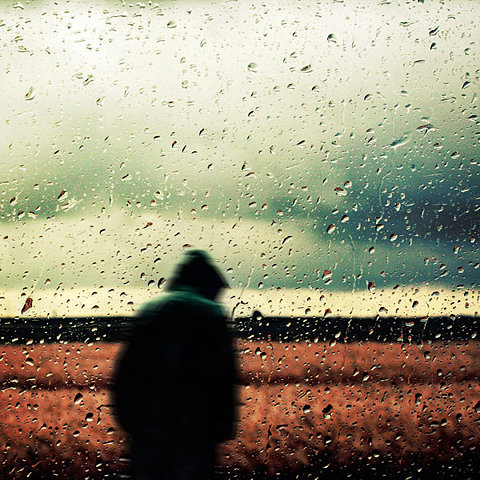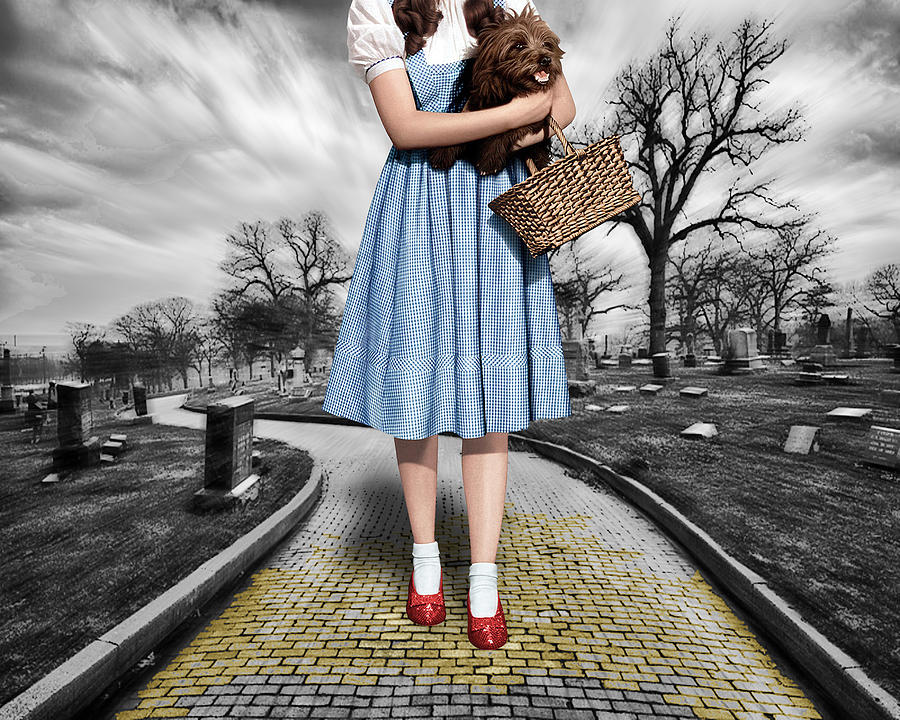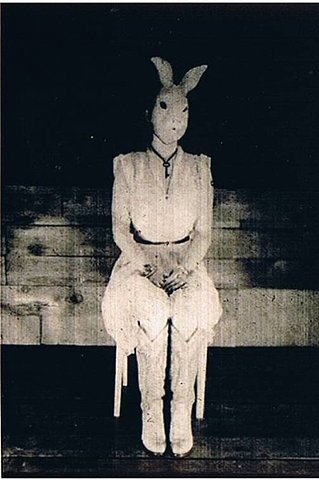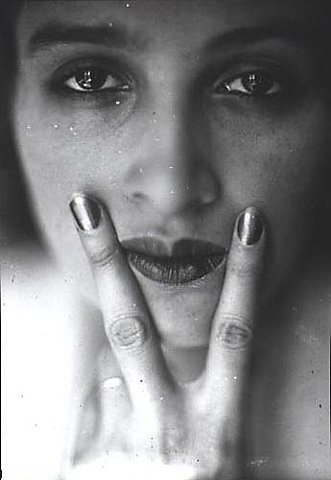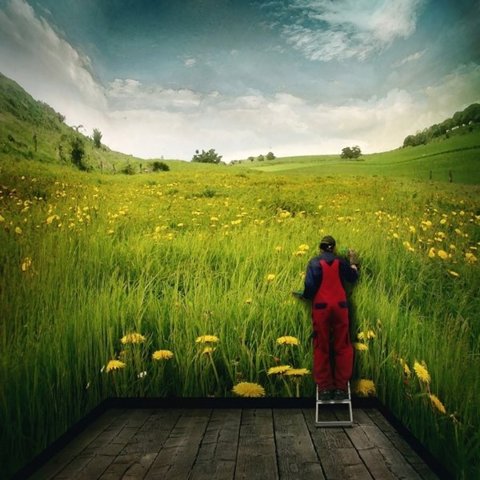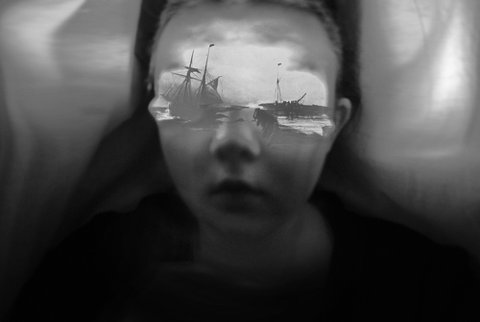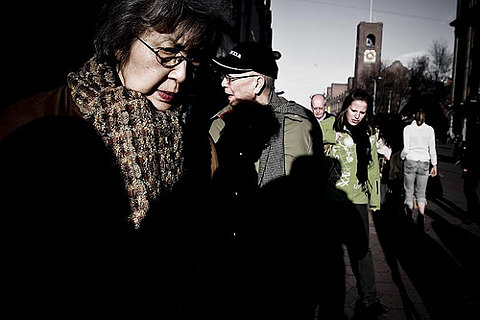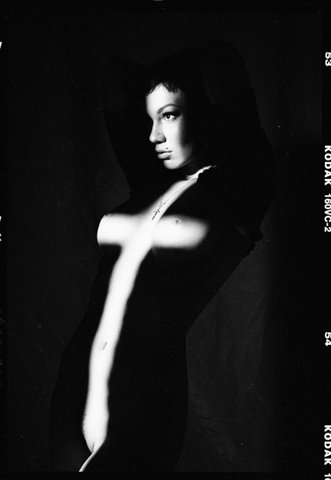The path is self-acceptance. The goal is self-acceptance.
Fate
Humans tend to choose one side of polarity (light/shadow, attraction/aversion) and refuse the other side. We choose the mountain and banish the valley. It takes huge energy to push away the denied aspect of polarity. Whatever aspect we split off from awareness will continually be presented to us by life (as fate). The more energy we use to repress, the harder it comes back.
In the yogic view the great problem of life is desire – clinging, craving, greed, holding on. Our desire for life to be the way we want it to be, rather than the way it is.
All of yogic practice is about getting under the moment of reactivity, the moment we choose a side.
In the path of yoga, there is only one lesson. One lesson that we have to learn over and over again, and each time it arrives as an epiphany. Whenever we le go of our craving, clinging and grasping, whenever we stop the war with reality, whenever we are totally present and undivided, we are in union with our true nature. the quiet mind that reflects the real with utter clarity. A mind that lets go. Let go of your struggle with the world.
What we hold unaware in our unconscious will eventually come to us as fate.
Rumi: Out beyond ideas of right and wrong there is a field. Meet me there.
Seeing
The idea about who we are or should be were formed early by how we were seen by others.
In order to see ourselves we need to rely on our reflections. On others.
Gravity
The false sense in its fortress of achievement always lives in isolation from intimate relationships. Grandiosity and perfectionism can’t survive true intimacy.
Feeling of worthlessness is projected onto others (you losers), then ideal guru feeds false self (I’m so special). But the true guru doesn’t sit on a golden throne, real gurus are eccentric and invisible (can only be seen by the true seeker).
Community
We create our buildings, then they create us.
We construct circle of friendships and community – and then they construct us, they see us into being.
For real self to emerge we need community.
The mirrors we continue to need.
No way to see without being seen.
Oz
Spiritual communities archetypally made of orphans looking for idealized moms and dads and a new family. The Reformation was about removing the intercessor, the person between the seeker and God. In the trinity, Jesus had to die so people could have a more direct relationship with God. In the Wizard of Oz, Dorothy makes a journey to the Wizard, the all-powerful idealized object who can save her, through her quest she develops skills and self-confidence to see through the Wizard. Her own power gets her home, not the power of the Wizard. Creating spaces of light and purification, can create large shadows. The back is as big as the front. Raising up the idealized father, that’s how far he has to fall. The community’s job is to take back the projections, to feel the disappointment, delusion, grief of letting go another childhood illusion. The gain is empowerment, it’s not out there, it’s in here.
Healing Through Relationship
When we carry a heavy load of repressed, hidden and unintegrated experience, we are constantly seeking out relationships that will help us hold this experience (and eventually bring it to a more successful conclusion).
Our relationships are driven by need to heal and be whole.
Healing requires a witness, a relationship.
There are usually two choices: repression or acting out.
Bapuji: Every time you judge yourself you break your own heart.
When an energy experience hangs around long enough to become troublesome, it is usually because we are subtly resisting it. And what we resist persists. (The recommendation is usually to bring awareness to sensations, without judgment, open to the experience of the energy, if we can tolerate it. It is the nature of prana to move. Eventually it will.)
We each have a unique postural signature – learned in childhood. The postures of the false self try to inhibit feeling that are too hard to bear. Rigidity, constriction, brittleness, shortness of breath. Posture is destiny.
For example: a cocky attitude invites aggression. A fear attitude (lack of life, shrinking away, being dead) invites solitary. (There might be buried grief, or anger).
Our unconscious posture creates our destiny.
Tension between thinking and feeling results in tension in jaw and base of skull.
Hated Child
Don’t take up space, don’t breathe, don’t live. Introject rejection of mom and dad. He begins to stop living in order to preserve his life. Adult withdraws into activities (like art) that relieves him of intimacy, the mess of feelings.
The hated child may appear as idealized version of themselves, accepting and understanding others (though not themselves). They can live in a brittle way with their false self – trying to give to others what they can’t for themselves.
How to come back to life? Safety. Trust.
He had to learn that his life force didn’t threaten his life. It was his life.
In child’s pose she stops being the responsible adult the nurse and single parent, she accesses the neediness she had pushed away, feeling her ‘skin hunger’ to be touched, held and soothed. Emotionally abandoned by her mother cuz of her ma’s depression, she was still hungry, grieving, bewildered, and beneath that, angry. A state of perpetual mourning and unconscious rage. She rejects her own need (cuz it’s painful), and projects it onto her sisters who she helps and mothers.Her real work was to acknowledge that the abandonment had already taken place, grieve that loss, and then to stop abandoning herself.
Breath
The breath lies between body and mind, between emotional body and energy body. When bnreath is free we have access to our emotions.
All defensive moves of false self involves breath suppression. Chest breathing or thoracic breathing – breath drawn only part way down into lungs. This is body’s response to stress – fight/flight. It cuts us off from feelings and prana (life force). We are scared out of our bodies.
Use breath to integrate physical and emotional energy.
5 steps: breathe, relax (soten belly), feel (breathe into area), watch (no judgement, only curiosity), allow. We know that the energy moving through prana body is intelligent, moving in the right way for healing and integration.
The false self is primarily a defense against energy, a stragegy for keeping prana from threatening the fraile structure of the alienated self.
The hated child introjects the rejection of his own life force and self-expression. The primitive rage at his betrayal, and terror that arises from the inner world of feelings and energy are denied and avoided. For years he had allowed himself to feel his good side, keeping his anger and fear on the shelf.
Body Memory
Our reactions to stress are expressed as muscle contractions. Usually the muscles relax after the stress event is over. But groups of muscles can be repeatedly contracted as a reaction to an unrelenting stressor, esp trauma. The stressed muscles can become shortened and chronically shortened, they don’t fully release. And other muscle groups, which work in opposition to those tensed muscles in order to create balance, become weak and flaccid through underuse. This can lead to hyperalertness, a tightness in breathing, in muscles of abdomen, shoulders and neck, long after trauma stimulus is gone. In this way, this incompletion “burns” into the hardwiring of the body like a snapshot of the body at the moment of trauma.
Wilhelm Reich: unconsciously held patterns of physical contraction and defenses – he called these “character armour.” The trauma spreads via fascia, originally highly flexibile, can become increasingly frozen and rigid as our body-mind becomes fixed in defensive postures. Age and lack of exercise helps too.
Contraction is the nature of afflictions (kleshas). They are held in energy whorls, tightly condensed balls of energy collapsed in on themseles, black holes of the human body. These unconsciously held energy knots are called granthis.
Yoga
During regular asana practice, the physical and energy bodies go through profound reorganization, it is, as Trunpa Rinpoche said about meditation “an operation without anesthesia.” Without a strong container of calmly abiding self, we cannot bear the disorganization of self that result. We give short shrift to relaxation, integration, rest. Trusting body wisdom means learning to respond when body says no. Sometimes, rest is the highest spiritual practice.
Yoga postures build the hardwiring of the body – the physical stucture (musculoskeletal, neurological, digestive, respiratory, circulatory, immune systems) capable of containing the reorganization of the psyche.
Bonnie
After 14 years on her nursing unit, Bonnie had earned a three-month sabbatical, and she decided to focus on her yoga practice. That summer, as her attention became increasingly sharp with daily practice, she discovered a tight little ball of energy just behind her right sitz bone, tucked somewhere deep in the middle of her glut muscle. Always, when she attuned to her body, she could feel it – tight, throbbing and aching. It was relentless. For weeks she pushed it away, reacted to it, felt her aversion to it, hated it. Finally, she decided to try another approach. She allowed it to be there. She spoke to it. She explored the whole area as she moved through postures. She asked questions: Who are you? What do you want? What do you have to say to me?
One day as she was working in this way, she felt a new layer of unconscious reality emerge into her awareness. Just below the surface she could feel a deep and involuntary twisting in her body. She saw this twist as if she had suddenly developed x-ray vision. She could see how it pulled her entire right side into contraction, pulling her head down, tightening her right shoulder and pulling it back, and pulling her right hip up and in. Her belly seemed to be twisted into a permanent knot, and she could feel how her lower rib cage was being pulled down toward her public bone. She felt as if her belly was in a vise. How could she have been unaware of this!
A few classes later, when she looked in the mirror, she could see the twist in her body with her own eyes. What hadn’t anyone seen it before? And then she saw something even more amazing. The whole body was pulling toward that “energy cyst” in her right hip. She also noticed for the first time a deep ache in the area of her right kidney. Suddenly it felt as though someone had kicked her there.
As Bonnie worked with this twist over the next several weeks, she discovered that the real centre of the twist seemed to be in the area of the right kidney. On days when she was “going deep” as she put it, the energy cyst in her hip magically dissolved, and the throbbing intesified in the kidney area. As the kidney opened, the throbbing took on vivid new emotional colours. It throbbed and ached. It felt like lead. Dense. Impenetrable. It felt like an ancient trapped scream, or perhaps a black hole of grief. Then one day, as Bonnie continued to make room for it, it shifted and softened, and a huge wave of terror poured through her. The dread and fear literally took her breath away. The first time she experienced this, she stopped doing postures and sat down.
Gradually, over the course of several weeks, Bonnie learned to bear the fear when it surfaced, and as she did, the fear that had initially taken her breath away deepened into grief – a black heaviness. Every few days a new wave of this grief surfaced. Deep sobbing would rack Bonnie’s body, penetrating the thick, leaden sadness. Then would come a euphoric sense of release, and she would be fine for a few days.
The energy cyst in the kidney area took on a central role in the drama. It throbbed and poured forth images, feelings, and sensations: red rage, black grief. Along with the physical releases came memories that felt as though they were emerging from her cells. Among them, Bonnie had primitive images of her life at the time of the birth of a younger sister, Tracey, when she was two years old. For the first time, she understood this to be the occasion of her mother’s final abandonment of her. Rage erupted towards her sister and towards her mother. She had no idea she had these feelings of rage toward Tracey, even though she had always felt comfortable around her.
During the course of that remarkable summer, Bonnie began to understand that her entire physical structure had literally been twisted into a knot around the painful issue of her mother’s emotional abandonment. The knot had penetrated so deeply into her body and her energy body, so deeply that remnants of it would almost surely remain for the rest of her life. Nonetheless, as she honed her sense of her own body through yoga, she could keep the impulse to twist away from her own deeply felt sense of need. When she was aware of the impulse, she could choose how to respond. Perhaps she did need to defend herself in certain situations. But now, she sometimes had the freedom to risk opening to her own need rather than twisting away.
Above all, Bonnie began to experience a sense of aliveness.
Grounding
There was nothing Bonnie needed more than grounding. Bonnie’s awaeness of her legs was completely split off. Often she wasn’t even aware of them. She couldn’t beginto sense her real body until she felt her real feet touching the solid ground beneath her, holding her up. Through her legs she found she could connect with the energy of the earth. She didn’t have to count just on herself: she could be supported.
At one point, practicing the standing postures like the warrior or the tree became central to her healing. She learned to hold her ground, to stay with her internal experience of need, however shaky she felt. She learned to feel the strength in feeling real feelings. It was only as she developed her grounding that she could begin to access her aggressive, assertive feelings, her natural hostility, and the rage that resulted from her abandonment.
Bonnie’s legs had, since toddlerhood, been used in the service of the false self – being responsible, running errands, taking care of others. There was, she discovered later, rage in those legs that terrified her. As she learned to kick and push with her legs, she freed up huge amounts of energy for her life.
The false self is habituated to resist the feelings in the belly – out of the ancient unconscious fear that if I am needy no one will want me. I will be abandoned. I will be hated and despised. No one wants a baby. The feelings of need that arise when the musculature releases may initially be experienced as disgusting and degrading, but as they are embraced, they can be truly met.
It was unsettling for Bonnie to feel so much energy at the core of her body. It took a long while for her to allow the waves of feelings to move through her belly, pelvis hips. This meant experiencing the wave of breath in the belly for the first time in decades. It meant experiencing new sense of aliveness and energy.
Her diaphragm freed up. Her digestion improved. The wave of breath was less suppressed and that nagging tightness between the shoulder blades was relieved. She felt a release of the tension at the back of her neck and jaw, which had been holding and inhibiting both rage and sadness. Her eyes became clearer, her face relaxed, and she had periods of feeling that it was easier to concentrate. She had fewer headaches.
Garth
I recognized ‘the posture of Garth’ as I would recognize a face – how he held his body, his gestures and expressions, his tone of coice. Garth’s breath seemed restricted, as if he couldn’t bear to penetrate down into his body. So he took little short, rapid breaths. When I sat with him I noticed that if I wasn’t paying attention, I would begin to stop breathing myself.
In infancy and childhood, we all develop deeply unconscious physical postures, just as Garth did. These are neuromuscular and energetic postures that arise as embodiments of our feelings and chronic mental states – fear, joy, rage, happiness, grief, satisfaction, hunger. We each have a unique postural signature. It is one of the chief ways we are known by others. A signficant part of our individual postural signature is an embodiment of our attempts to inhibit feelings that have been too difficult for us to bear. These are the postures of the false self. They are characterized by twisting away from life, by rigidity, constriction, brittleness, and held breath.
Much of our physical life is unconscious., Many of the physical processes of our life – sensations, feelings, movements, contractions, releases, expansion – operate completely outside our awareness.
Garth’s shallow breathing and tight belly, his frozen eyes and joints, the deadness and lack of life force in his body – all of these habitual responses to fear chronically perpetuated the original mental states that had long ago evoked them. They kept Garth deeply separated from life. They insured that he continued to drag the past into the present and the future.
Even when there was nothing to fear, Garth’s underlying mental state was awash with fear and contraction, because his body’s posture mechanically and biochemically elicited it. Terror, rage, and grief were the unacknowledged waters he swam in. Fear was how the world looked to him. He was somehow deeply split off from life, from the life of his body, from the life of his breath. His unconscious posture was creating his destiny over and over again.
The deep patterning of the body will undermine our most elaborate ideas, hopes and fantasies. The entire superstructure of our adult lives is underlain by the primal gestures of our postures.
The primary genius of yoga lies precisely in its recognition of the critical role of the body in the developmen and transformation of character.
Garth’s posture in life is an archetypal human pose: it is the posture of the hated child.
Garth’s father had been divorced from his first wife and married a much younger woman. His new wife wanted only her idealized image of a baby. The real experience of a caesarian birth and of the baby itself – messy, smelly, needy, demanding, dependent, was another thing entirely. After several painful months of wrestling with the newborn, she relegated Garth’s care to a series of nannies and nurses. He felt hated and resented for being needy and for actually “disfiguring” his mother, as she would later say to him.
The child who enters this kind of environment takes in a very difficult message with his mother’s milk: I have no right to exist. I should not be taking up space. He lives with a profound, but often unconscious, sense that he does not belong in the world.
The hated child introjects, or takes in whole, the rejection of his own life force and self-expression. In an attempt to work out a solution with his caregivers that allows him to get what he can, he must take a tragic position vis-à-vis his own life force: he begins to stop living in order to preserve his own life. In order to shut down his apparently offensive needs he learns from an early age to disconect from the most basic of life processes – the body, feelings, intimacy, food, nature. For the hated child the world is not a safe place. He cannot trust others, himself, the community, or life itself.
Physically, the hated child will do his best not to take up space in the world. The life force is blocked, restricted and mechanical. The breath is restricted. There is often a split between thinking and feeling, which shows up as chronic tension in the neck and at the base of the skull. The eyes will be disconnected and unresponsive, as the child attempts not to see. Joints are frozen, and there is often a deep twisting away from the visceral experience of life.
The hated child believes that he will be annihiliated by feelings if he lets them move through him. The false self created in order to survive the ordeal of being hated is a brittle and fragile compromise. It is deeply threatened by alive, spontaneous self-expression. The child locked in this compromise allows himself very little positive or negative feeling. Anger and rage, grief and depression must be denied at all costs, for they threaten the entire structure. The hated child must turn away from life.
The hated child may learn, as Garth did, to live entirely in his head – in a world of rationality that is walled off from disturbing feelings. As an adult he may find that he can withdraw into activities that offer worldly accomplishment while avoiding intimacy, feelings, and the complicated emotional lives of others.
Because his very right to exist is always in question, the hated child cannot be bad, risk being obnoxious. But he can be spiritual. Being spiritual may offer the perfect cover, for it may involve being transparent, not taking up space, and being not just good, but especially good. Because the hated child may feel expecially bad, he may need to appear especially good – the all-giving, perfectly responsive child without any offending sharp edges.
The hated child may, more than any other version of the false self, begin to feel and appear as he should appear. He may deny his angry feelings, his grief, his terror, becoming an idealized version of himself. His false self may be built around being accepting and understanding of others. Because he has dissociated feelings and thoughts, he can live in a brittle kind of way with his spiritual false self.
The first need of the hated child is safety, and so it was with Garth. He had been scared out of the body. He had developed a great concern with security. Where to find a safe place where transformation can happen, where energy can happen, where the body can live again? The first task is to learn to have a full experience of feeling in the body, and to learn to tolerate the depth, range, and realness of this life force moving in us.
Garth’s false self, his hyperintellectualized and hyperspiritualized self, defended him in every way against he spontaneous flow of prana. Recall that the false self is primarily a defense against energy, a strategy for keeping prana from threatening the fragile structure of the alienated self. For Garth, this defense manifested on the yoga mat as rigidity, inflexibility and lifelessness.
For Garth the rivers of feelings inside were raging. The hated child takes in whole the rejection of his own life force and self-expression. The primitive rage at this self-betrayal and the terror that arises around the whole inner world of feeling and energy are both denied and avoided. Garth for years had only allowed himself to see his ‘good’ ‘spiritual’ nature keeping his rage, anger hidden deeply. How to let the breath descend into his belly and pelvis. He found these areas were opened deeply when he was exploring standing postures – the warrior, the triangle, the mountain. Here he discovered sexual and aggressive feelings, rage, and feelings of power. He had to learn that he wouldn’t be overtaken by these inner demons they were just energy, life force. Then he had to learn that this energy was not just OK but utterly intelligent, awake, divine.
The deepest suffering of the hated-child is the failure of attachment – the loss of the life-giving bond with parents and other loved ones. Garth was beginning to allow himself to feel his attachment, his love for me, for the community, his friends. Another visible sign was his decreasing sense of specialness and perfectionism. He began to make fun of his own spiritual self-image. He had rejoined the human race, and joined our community.
It is through the awareness of breath and prana that we cross the bridge from separation and isolation to belonging and union. As we ride the wave, we know ourselves to be a river of intelligent energy and life – completely spontaneous and vital. As we get a taste for this vitality we enter the wave again and again, learning how to tolerate being with the reality of life moment to moment.
Susan: The Used Child
Susan was a 37-year-old lawyer who had been forced to take time away from her NY law firm because she was working herself into the grave. Two years earlier she had begun to develop serious colitis, and finally her docs said you have to take a serious break.
She hated the fact that she had been ‘weak’ and gotten sick. She seemed determined to recover via sheer willpower and brute determination. She developed an intense idealization of the guru at the yoga centre. In her career she had gone for the best – Harvard Law School. Now she was going for the best guru she could find.
Sitting around in a circle with her fellow workers in the shop, listening to The Velveteen Rabbit in one of our late-aft staff meetings, Susan showed another side of herself. “I just don’t feel real. I feel like that damned rabbit. Stuffed with sawdust. A phony rabbit.” Susan pulled herself together quickly, dabbed at her eyes with a tissue, and laughed it off. I suspected that part of her was horrified at what she had just done. But for a brief moment, she had allowed us to see the other side of her commanding presence – the fragile, brittle, empty, scared empty side that she usually kept tightly under wraps.
The ideas that we have about who we are and who we should be were formed early in childhood by how we were seen by important others. These mental representations are enduring and play a central role in our suffering and confusion about reality.
When we are kids, we need to be recognized and affirmed, accepted and appreciated. We need to be seen with loving eyes and reflected back with warmth. Psychologists call this the narcissistic need for mirroring. We need to be seen and reflected back as much as we need oxygen and food. We can’t see parts of our own body, our own life. In order to see ourselves, we must rely on reflection. Some of our interior landscapes we can see, but much of it must be seen by others, then reflected back to us. And the quality of the seeing is critical to how we see ourselves and who we become. The eyes with which we are seen become the eyes through which we see ourselves. Those eyes may be loving or despising or ambivalent or cruel and rejecting. It is these eyes that we will inherit.
Susan’s family looked good on the outside, but all their resources were devoted to looking good for the community. The internal experience of the family was hidden from outside eyes. It was one of emotional poverty and deprivation, competition for scarce resources, and very little connection with embodied pleasure and satisfaction.
The children in a family like Susan’s are inevitably used to meet the needs of the parents. The parents, depleted and needy, manipulate the child by withdrawing love and “supplies” when the child fails to mirror, echo and reward the parent. The parent is unable to be used by the child as that all-important emotional home base from which the child can securely explore merging and separating.
Susan’s father idealized her, frequently referring to her as his ‘golden child.’ He was gratified by her ‘cuteness’ and her obvious intelligence and competence. Susan’s father felt dumb around his comrades and her gifts became a way of compensating for his sense of inadequacy. He basked in the glow of her achievements.
Susan’s capacity to see herself was framed by eyes that wanted to see/bring to life only one side of her aliveness – her talent and intelligence. Her limitations, vulnerabilities and smallness remained unseen, unilluminated by love. Later, these aspects of her reality became not only unseen but unseeable. Susan’s false self was committed to only one side of reality. The false self is fundamentally unrealistic because it believes itself to be more perfect, self-sufficient and capable than could be true, or else more imperfect, empty, unworthy, powerless.
Susan’s efforts to attract her parent’s attention and love, her competition with younger sisters for the scarce emotional resources in the famly, led her to overachieving. Her ambitions to prove herself and attract attention masked a chronic sense of unworthiness and emptiness. She complied with becoming who she thought her parents wanted and ‘needed’ her to be.
Susan continued to act out this unresolved conflict in her legal career. She remained deeply attached to her successes and failures that were driven by the unconscious need to please, and to attract nurturing and emotional ‘supplies.’ She experienced the brittleness of a life based on the attempt to manifest the ego-ideal. She didn’t feel real. She was starving for mirroring, for real feedback, for someone to see through the façade of her false self.
When a child is used in the way that Susan was – to meet the parent’s needs – she is left with a sense of not being a real subject, but an object to be used by others. This leaves the used child with a chronic fear of being used, but also with an unconscious wish to repeat the experience of being used in order to complete it. And kids who have been used can’t help repeating it by using others. People who worked closely with Susan felt used.
The false self these experiences encourage is also held up by our culture – a culture that encourages separation and individuation above needing and bonding, a culture that promotes grandiosity, encouraging achievement and perfectionism, and the objectification of others, sexually and emotionally, a culture that demands the self-sacrifice that our false self also demands, a sacrifice that might be valuable for others, but from which we get no real pleasure.
Emptiness
Fame (movie) is about Doris Finsecker and her classic stage mother. When Doris’s mother looked at her, she saw an extension of herself, her own hopes and dreams. When Doris is finally accepted to a prestige high school her mother receives the call and yells out excitedly ‘Doris, we’re in!’ In her mind’s eye, Doris and her are one. This kind of framing gives Doris the message: without me, you’re nothing. And Doris feels like nothing. What’s being seen into aliveness is her mother’s image of who she should be – the prototype for the ‘false self’ – and Doris clings to this image. This is what is being nurtured into being. But it’s not enough to make Doris feel real. The false self always creates a feeling of emptiness and worthlessness at the core. And this emptiness may drive any number of projects meant to disprove and undo it.
Isolation
The false self in its forturess of achievement always lives in isolation from intimate relationships because grandiosity and perfectionism can’t survive true intimacy. Susan had been isolated from relationship because she found that whenever she got to know someone they were disappointing. They were not good enough. Limitation, vulnerability, imperfection and being ordinary were exactly what Susan couldn’t tolerate in herself, and as a result, she couldn’t tolerate them in others.
When Susan got close what she saw reflected back in the mirror was too painful. Loser! All of the conflicts that lived inside her would inevitably be revealed by being close to others. She avoided this authenticity as much as she could.
Guru
The used child among us looks constantly for the all-knowing self-object who will reflect her back the way she wishes to see herself. She wants to be part of the halo of being special. To be affirmed, recognized, admired – this is what she seemed to hunger for most. An idealizing transference. This kind of mirroring involves using others to acknowledge and aggrandize the false self. We want to be special, and we want our specialness echoed. They are objects for us, just as we were objects for our parents.
For the first few months of her residency, those of us who worked with Susan saw only the shadow side of her projections. She had to keep her own sense of worthlessness and inadequacy out of awareness, and she did this by projecting it onto everyone else. In her mind the worthlessness didn’t exist in her – it was us.
Over the coming months, Susan began to see more clearly how focused she was on the powerful character of the guru, and how distorted that was. She saw how it had promoted her avoidance of the many real relationships the community offered her. She was shocked to see how needy she was for the guru’s approval. The discovery of her pain, and the fact that it was alright to feel with normal human beings, was a ‘marker event’ for her, a dramatic and visible sign of inward change. The encounter with real feelings and the discovery of the depth of these feelings in the presence of someone who really cared for her helped to begin a process of transformation. Susan began to be more connected with a sense of real self – real suffering as well as real pleasure.
Over time Susan saw through her idealization. She saw that those of us with whom she was in real relationshp were her real gurus.
This is not just an American yoga story, but the archetypal story of the guru in Indian scripture. The true guru is a requirement for the practice of yoga, because he or she initiates the seeker into the realm of truth, through relationship. The true guru – the sadguru, or ‘teacher of the real’ – is capable of initiating the spiritual seeker into knowledge of the Absolute. In the archetypal stories this guru is not a glorified triumphal being, but is disguised. Yogic lore is full of cautionary tales about true gurus and false gurus. The true guru is not the one sitting on the golden throne. “Many are the gurus who rob the disciple of his wealth, but rare is the guru who remove the afflictions of his disciple.”
In Western psychological language, it is most likely that ‘the guru on the western throne’ has himself (or herself) become lost in the all-too-powerful hopes and wishes of students and seekers. Jack Engler: Idealization can reinforce the teacher’s narcissistic needs to be admired and powerful. they can also create a climate of unreality around the teacher.”
So many of the greatest masters of yoga have been eccentric, elusive, shabby, completely uninterested in external omnipotence and charm. Ramakrishna, perhaps the greatest yogic avatar of the last century, wore a shabby old ‘wearing cloth’ that was always falling off. The same was true of the great Neem Karoli Baba, Ram Dass’s guru. These teachers had no sense of themselves as being ‘special.’
Real gurus are invisible to the ordinary naked eye. Their inner magnificence can only be seen by the eye of the true seeker. The outward polish has long since been worn off, but the inward glow of truth is real and abiding.
Only other human beings can initiate us into the Real. We seek friends, lovers, communities, who can see us, hold us, bear us. We create our buildings and then they create us. We construct our circle of friends and communities and then they construct us – they see us into being. For the real self to emerge, we need a social network who love, support, challenge and sustain us. Such communities help us to accept and embrace all sides of our human nature.
In the movie Fame, Doris is newly seen by eyes that are interested in who she really is, not only her teachers, but an entire community of eyes committed to seeing the life, creativity, magic in others. In the reflection of these new mirrors, Doris recognizes a self she had always intuited but never seen before. She becomes real. Doris still has her mother’s eyes, but she also has a whole new repertoire of seeing which begins to deliver a new sense of authenticity.
As Susan was able to break out of her isolation and let people see who she really was, she was astonished to find how much people liked her. The more she showed her hidden self, the more it grew. She began to learn the value of expression versus suppression, the value of intimacy versus isolation. As she did, huge amounts of energy were freed up as she claimed the whole of her life.
As the real self emerges, we can start to see clearly. The self can now see its own nature, can see through the false-self construct, and finally perceive itself to be as it always was – born divine, nonseparate, connected with the whole field of mind and matter. Transcendence is simply the normal maturation of the self. As our most basic needs and longings are met by the environment we create for ourselves, transformation happens.
The roots of seeing clearly lie in our simple experiences of being seen. We cannot see without having first been seen.
Prana
Students often have the fantasy that the awakening of the prana body will be like taking a drug that gives us more energy for our perfect life. As the nadis are opened, purified and balanced through pranayama, as our consciousness remains attuned to the energy body, a kind of enriched prana begins to move through the system. But this isn’t as much fun as we might have hoped.
Prana will move right to the densest areas of our attachments, where we want to feel solid and armoured, and begin to erode this sense of solidity. Prana moves methodically through the physical and energy bodies, unwinding blocks, holdings and karmic knots. Anywhere there is a blockage to energy, prana will be at work. The symptoms that we may feel – the discomfort, the sometimes bizarre energy experiences – are simply the process of unwinding, the relase of the blocked energy. These releases or kriyas can be short or can last for months.
Tony
Tony’s experience of the relationship between his prana body and his physical body was pretty typical. There were areas where he could feel subtle energies, and other areas that felt blocked, numb, cut off from prana. His back was physically overdeveloped in relationship to rest of his body – powerfully muscled. Though his back seemed flexible, Tony rarely had the sense that it was open to prana, he had the vague sense he was holding on to someething back there, he was keeping something behind him.
During long meditation retreat Tony became aware of an intense sensation between his shoulder blades, a kind of death grip, which tightened muscles all way round his chest. Like an iron barrel. As Tony continued to sit and explore, he breathed into this vortex of energy it began to soften and open. As if for the first time he could feel the throb of breath and life in this area of his back. A little door had opened. It felt like bliss just to have some energy moving there.
After the retreat Tony was attracted to back-bending poses – the camel, the bow, and the cobra. He had deep spasms in these poses between his shoulder blades. He wanted to hold the postures deeply so he could feel the throbbing and movement and explore it. As Tony allowed energy to move into his back, as he let the energy build, he would have amazing experiences after releasing the posture, his arms would flail and move spontaneously, sometimes he would kick aggressively. He learned how to move with the wave of prana instead of against it.
Over months these catharses brought to the surface a mourning process that had been locked in his physical structure. Both the long-denied energy and the rage and aggression toward his father and brothers were available for him to feel in his body for the first time. Eventually, Tony came to understand that he had put all of his aggression and rage behind him, and there it had remained – lodged in his back, right between his shoulder blades.
His back was holding painful feelings like rage and aggression, but also the false-self posture of self sacrifice – doling out for others out of an overdeveloped sense of responsibility, feeling as though he were carrying them on his back.
Entering the back of his body was entering the shadow side. Dangerous and exhilarating. Coming home to the split-off aspect of his own self.
*
Don’t wake up at the end of your life and find that you’ve had yourself at the centre of it all along. You have to find someone, some thing, some purpose greater than yourself to which you’re devoted, and cultivate that devotion.
